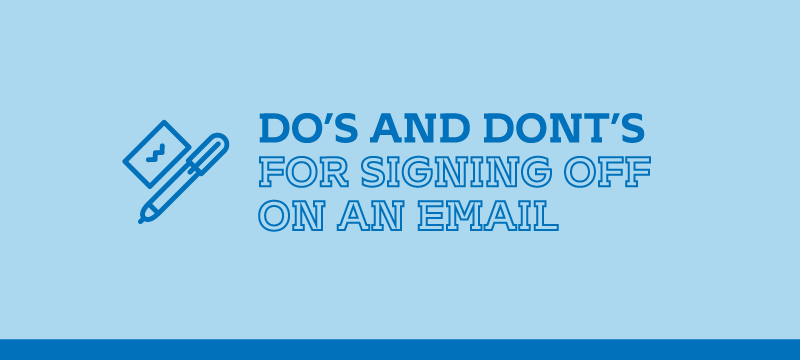




On top of being a key component of Marketing Innovation, email signatures stand as powerful, low-cost, high-return marketing tools for any organization. If made use of in an effective manner, email signatures help to optimize brand awareness hence serving as a cognitive flag for visibility maximization. So, it is of utmost importance to adopt the right strategy when it comes to signing off on your email. Below is a list of ABCs regarding email signatures:
No use of quotes in your emails
No use of oversized corporate logos
Include your contact details and title, make it simple
To help you out regarding a good email signing off strategy, take the best out of the list below (commentary and notes from experts):
Best – Totally safe, universally used and highly recommended.
My Best – A bit pretentious.
My best to you – Outdated.
All Best – Harmless.
All the best – Commonly used and recommended.
Best Wishes – More convenient to a greeting card but can be used.
Bests – A little too fussy.
Best Regards – More formal, recommended.
Regards – Fine and helpfully short. Highly used.
Rgds – Can be sent from phone Okay. Too familiar.
Warm Regards / Warmest Regards – Meant for business emails or for a personal email to someone you don’t know so well, meaning thank-you.
Warmest – Can be used for personal emails, for occasional exchanges.
Warmly – Can be used among colleagues.
Take care – For personal emails.
Thanks – Appropriate, can be used.
Thanks so much – For business relationship in response to time and effort deployed.
Thanks! – In the right context, harmless.
Thank you – More formal than “Thanks.” Can be safely used.
Thank you! – Can be used in the right context.
Many thanks – Used for appreciation of time and effort deployed.
Thanks for your consideration – A little bit pretentious. To be avoided.
Thx –Gaining momentum.
Hope this helps – Can be used when help is offered.
Looking forward – Showing your eagerness to meet with the recipient.
Rushing / In haste – Harmless in rush hours when you lack time to proofread.
Be well – Not suitable for business emails.
Peace – In some contexts, depends on your interlocutor.
Yours Truly / Yours / Very Truly Yours – To be avoided. Feels like a letter to your pen pal.
Sincerely / Sincerely Yours – Can be used for formal business correspondence.
Cheers! – Can be used, depending on your correspondent.
Ciao – Only in informal personal emails.
Your name – Should be concise and avoid using initials.
Initials – Only if you know your recipient. Can be used for business emails for frequent exchanges
Love / Lots of love / Hugs / XOXO – Too familiar. Harmless at business level, where hugging is common.
Smiley face – Increasingly accepted. Harmless.
High five from down low – To be avoided.
See you around – Green light!
Sent from my iPhone – Widely used to explain concision and typos.
Typos courtesy of my iPhone – Outdated.
Sent from a prehistoric stone tablet – Occasionally, get bored quickly.
Please consider the environment before printing this e-mail. – Better not to use.
vCards – Harmless.
Lengthy disclaimers – Be concise!
http://www.forbes.com/sites/susanadams/2013/09/27/57-ways-to-sign-off-on-an-email/